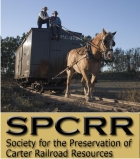

Brooks Locomotive Works.

Engraving Of The Brooks Locomotive Works.
Brooks Locomotive Works was founded by Horatio G. Brooks, the former Chief Engineer of the New York & Erie Railroad (NY&E) in 1969 shortly after the NY&E vacated its shops in Dunkirk, New York.
By leasing the NY&E shops Brooks had a ready-made facility for locomotive construction and labor force and the doors were opened on November 11, 1869. The initial capital stock of the company was valued at $350,000 and rose shortly thereafter to $500,000, which allowed him to expand the facilities to one of the largest in New York State. This massive initial investment influx allowed first locomotive completed the following month after opening and within the first year production rapidly climbed to at least seven locomotives per month with 37 locomotives and 100 cars completed by the end of 1867. Production climbed to 43 additional new locomotives completed at the end of 1868.
In 1872 Brooks entered the new Narrow Gauge market and became the No. 2 producer of locomotives following only Baldwin in production for common carrier railroads. Narrow Gauge locomotives fell into the following wheel arrangements: 0-4-4T, 0-6-0, 2-6-0, 2-8-0, 4-4-0, and 4-6-0.
Brooks was able to avoid bankrupsy during the financial panic of 1873 and recovered rapidly. Participation in the National Railway Appliance Exhibition in Chicago, Illinois in earned Brooks Locomotive Works the "Best in Show" award.
Brooks completed its 1,000th new locomotive in February 1884.
Brooks completed its 2,000th new locomotive in November 1891. The company's production in 1891 was 226 new locomotives, which dropped to 90 built in 1894 due to a new national financial crisis.
By July 1898 Brooks completed its 3,000th new locomotive. Having sold locomotives to nearly all the major roads of the day.
Brooks was unable to recover to production levels preceding the financial panic of the 1890's and in 1901; Brooks Locomotive Works merged Schenectady Locomotive Works and several other locomotive manufacturers to form the American Locomotive Company. The 1901 merger also signaled the end of Narrow Gauge production for the company.
The Dunkirk facility under ALCO continued operations until 1934 building products labeled under the ALCO-Brooks name with the last new locomotive produced at the Dunkirk plant in 1928. New construction was then shifted to the Schenectady plant. The old Brooks plant shifted to spare parts production for existing ALCO locomotives for several years then to custom heat exchangers, high-pressure vessels and piping products as the ALCO Thermal Products Division.
World War 2 brought specialized wartime production to facility due to its ability to handle large-scale forging, casting, and machining. The primary products were cannons and locomotive parts as part of the Lend-Lease program. Post war production returned to large industrial custom castings however, industrial markets began turning to "off the shelf" equipment the plant was ill suited to produce. The facility was closed in 1962.
Sources.American Narrow Gauge Railroads. George W. Hilton. Stanford Press. 1990
Western New York Railroad Archive. (http://www.wnyrails.org/index.htm).
Wikipedia: Brooks Locomotive Works (http://en.wikipedia.org/wiki/Brooks_Locomotive_Works).
Reference Data Available Online
Brooks Catalog A Catalogue descriptive of simple and compound locomotives, 1899.
Courtesy: Archive.Org
Locomotive Compounding and Superheating. Brooks Locomotive Works, 1907.
Courtesy Google Books



